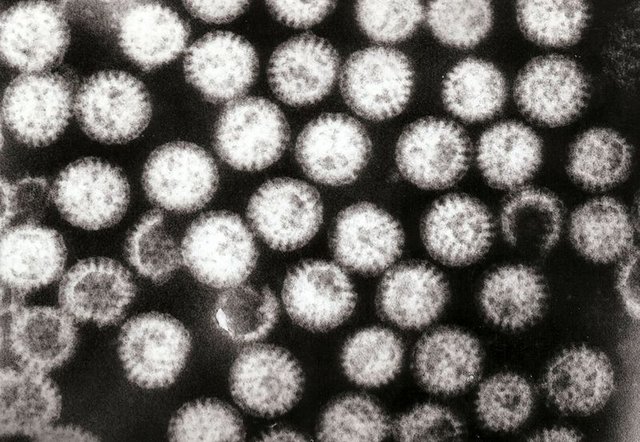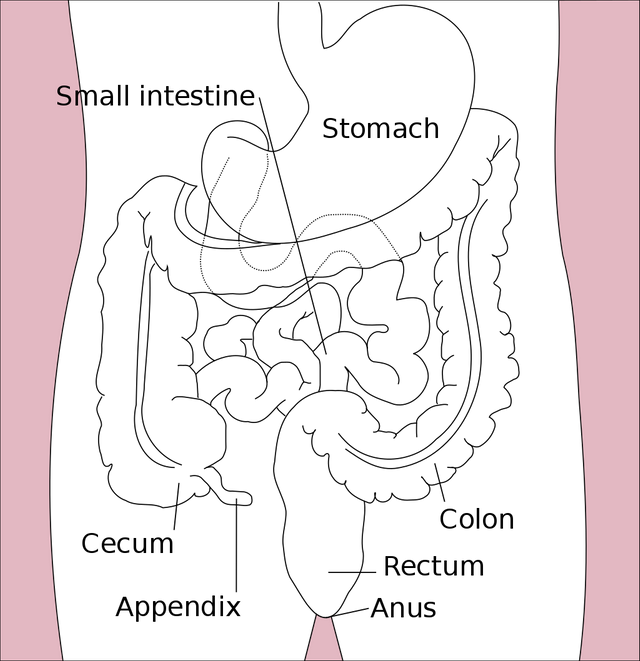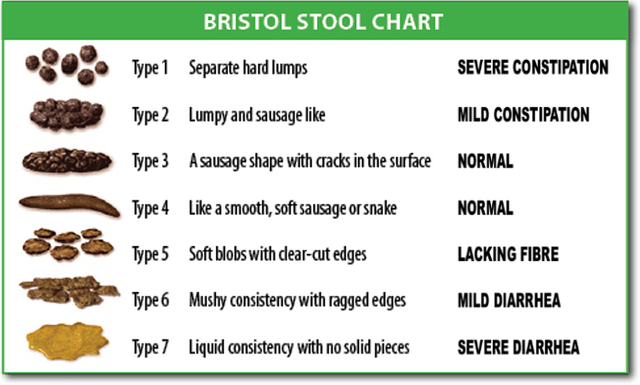DIARRHEA IN CHILDREN; The Danger Of Anti-diarrheal Drugs
Diarrhea is about the commonest cause of death in the under-five age group, second only to the Pneumonias. It usually involves frequent passage of loose, or watery, stools-- with attendant loss of body water leading to dehydration.
Because it involves frequent passage of loose stools, most people usually focus on stopping the diarrhea-- that is the frequent stooling, itself; sometimes neglecting the more important measure, which is fluid and electrolyte replacement. This, at best, could be described as chasing shadows, while leaving the object unattended to.
In this article, we'll be looking at the dangers of using anti-diarrheal, or diarrheal-stopping, agents in acute diarrheal diseases, especially in kids!

Multiple rotavirus particles Wikimedia commons
WHAT ARE ANTI-DIARRHEAL AGENTS?
These are drugs used to stop, or reduce the frequency of, stooling in the setting of diarrheal diseases. They include popular over-the-counter medications, such as: Kaolin-containing agents-- like Diastop; and antimotility agents, like Loperamide [Imodium], and Lomotil.
HOW DO ANTI-DIARRHEAL AGENTS WORK?
Diarrhea usually involves increased intestinal movement, secretion of fluid, and/or reduced absorption of fluid and nutrients-- leading to increase loss of fluids in stool. This can be brought about by the presence of toxins, or harmful microbes, in the intestines.
Anti-diarrheal agents work by targeting one, or more, of these mechanism. For the Kaolin-containi
ng agents; they function by mopping-up toxins in the intestine, and converting the watery stools into pastes. For the antimotility agents, like loperamide, and lomotil; they function by reducing intestinal movement, thereby reducing diarrheal episodes.
The important question is: do these measures, in anyway, better the prognosis of acute diarrheal diseases; do they in anyway address the major issue in diarrheal diseases, which is loss of intestinal fluids?
Before I answer that, let me introduce you to a new concept: third space loss.

Stomach colon and rectumWikimedia commons
THIRD SPACE LOSS
The body fluid compartments are broadly divided functionally into the: intracellular, and extracellular spaces. While fluid in the intracellular space is called intracellular fluid [ICF], and includes fluid inside cells; that in the extracellular space is called extracellular fluid [ECF], and includes fluid outside cells, including interstitial fluid, and plasma [the fluid part of blood].
What is unique about these TWO fluid compartments is that the fluid in them equilibrate between each other, and ARE AVAILABLE TO THE BODY for use, to facilitate normal bodily functions.
There's a third fluid compartment, often referred to as the " THIRD SPACES" This includes the peritoneal cavity, the pleura, etc. Unlike fluids in the first two spaces described above, fluid in the third space IS NOT READILY AVAILABLE TO THE BODY FOR USE. Because of this, when, for any reason, there's increase in the quantity of fluid in these spaces, it is considered LOST to the body, as it CANNOT be used by the body. Hence the term "third space loss," or simply "third spacing."
THE INTESTINE AS A THIRD SPACE.
Usually, the intestine is not considered a third space. This is because, fluid in the intestines can be absorbed by the body, usually in the large intestine, and USED for normal bodily function.
However, in some situations, especially when there's either obstruction of the intestine, or impairment in its absorptive mechanism; fluid in the intestine becomes UNAVAILABLE to the body, and is considered lost to it. In such instances, the intestine becomes a "THIRD SPACE."
Now, the shocker is: the intestine can hold as much as 3 to 6 litres of fluid in an adult! When you add the capacity of the stomach to this, the figure rises to about 4.5 to 7.5 litres!
What does this have to do with anti-diarrheal agents then, you may ask. The answer is simply this: while they may reduce frequency of stooling, they don't in anyway affect the loss of body fluids into the intestines! In other words, they only prevent the fluid being lost from coming out through the anus! This means that while the child may no longer be stooling, he may lose as much as 2 to 4 litres of fluid to the "third-spaced" intestine!

Bristol stool chart Wikimedia commons
DANGERS ASSOCIATED WITH THE USE OF ANTI-DIARRHEAL AGENTS
- They create a false impression of wellbeing.
While they may reduce frequency of stooling, body fluids is still lost to the intestine. This may make an unsuspecting caregiver to soft-pedal on rehydration therapy, while the child gradually drifts into shock, and death. - They can cause Ileus.
Ileus is a form of adynamic intestinal obstruction. It occurs when the intestines are stunned, and stop moving, leading to abdominal distention, constipation, pooling of fluid in the intestines, and vomiting. It could be life-threatening, especially in the wake of a diarrheal illness. - Interference with body's absorption of drugs, and vital nutrients.
Anti-diarrheal agents, such as Kaolin [Diastop], adsorb nutrients, and drugs, making them unavailable to the body for use. - Other side effects.
Antimotility agents are saddled with a myriad of side effects, including: drowsiness, impairment of respiration, and vomiting-- things you don't want in a child whose system is already battered by dehydration! - Paves way for sepsis
As funny as this may sound, some schools of thought have it that diarrhea, especially those of infectious origin, is actually a defense mechanism; it is, in a sense, the body's way of expelling harmful microbes, and reducing body's microbial load. According to this theory, anti-diarrheal agents, keeps the offending microbes sequestered in the body, instead of being lost in stool.
CONCLUSION
What a child having diarrhea needs is simply this: REHYDRATION! Don't worry about the stooling; it will STOP ON ITS OWN.
All you need is judicious administration of ORS and Zinc; and to take the child to a hospital if:
- rate of fluid replacement is not commensurate with rate of fluid loss in stools
- the child is vomiting persistently
- the child's tummy is distending
- there's blood in stool
- the child is having high grade fever, refusing feeds, and/or looking really sick
- etc.
Do no give any Anti-diarrheal Medication to a child having diarrhea.
REFERENCES
- Chronic diarrhea of infancy
- Diarrhea: Why It Happens and How to Treat It
- Wikipedia Diarrhea
- Bristol stool scale
This post has been voted on by the SteemSTEM curation team and voting trail in collaboration with @curie.
If you appreciate the work we are doing then consider voting both projects for witness by selecting stem.witness and curie!
For additional information please join us on the SteemSTEM discord and to get to know the rest of the community!
Congratulations @edwin10! You have completed the following achievement on the Steem blockchain and have been rewarded with new badge(s) :
Click here to view your Board of Honor
If you no longer want to receive notifications, reply to this comment with the word
STOPCongratulations @edwin10! You received a personal award!
Click here to view your Board
Congratulations @edwin10! You received a personal award!
You can view your badges on your Steem Board and compare to others on the Steem Ranking
Vote for @Steemitboard as a witness to get one more award and increased upvotes!